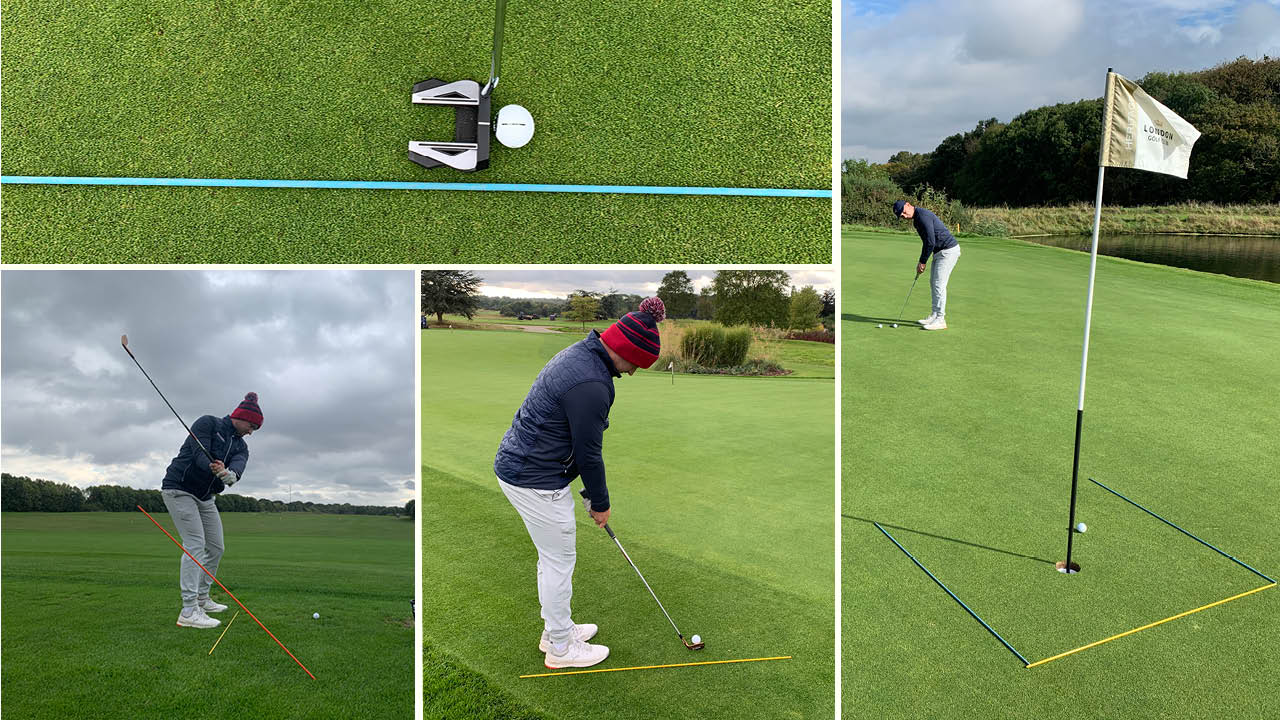
Golf alignment sticks are a great training aid that can help you to improve every facet of your game, but only if you know how to use them correctly.
These inexpensive tools are becoming common place on golf driving ranges all over the world, with more and more golfers combining them with the best golf tips in their pursuit of progress.
In this video and article, Golf Monthly Top 50 Coach Alex Elliott shares 10 of his expert tips for how to use golf alignment sticks, which could help you to reach your full potential...
10. Swing Plane
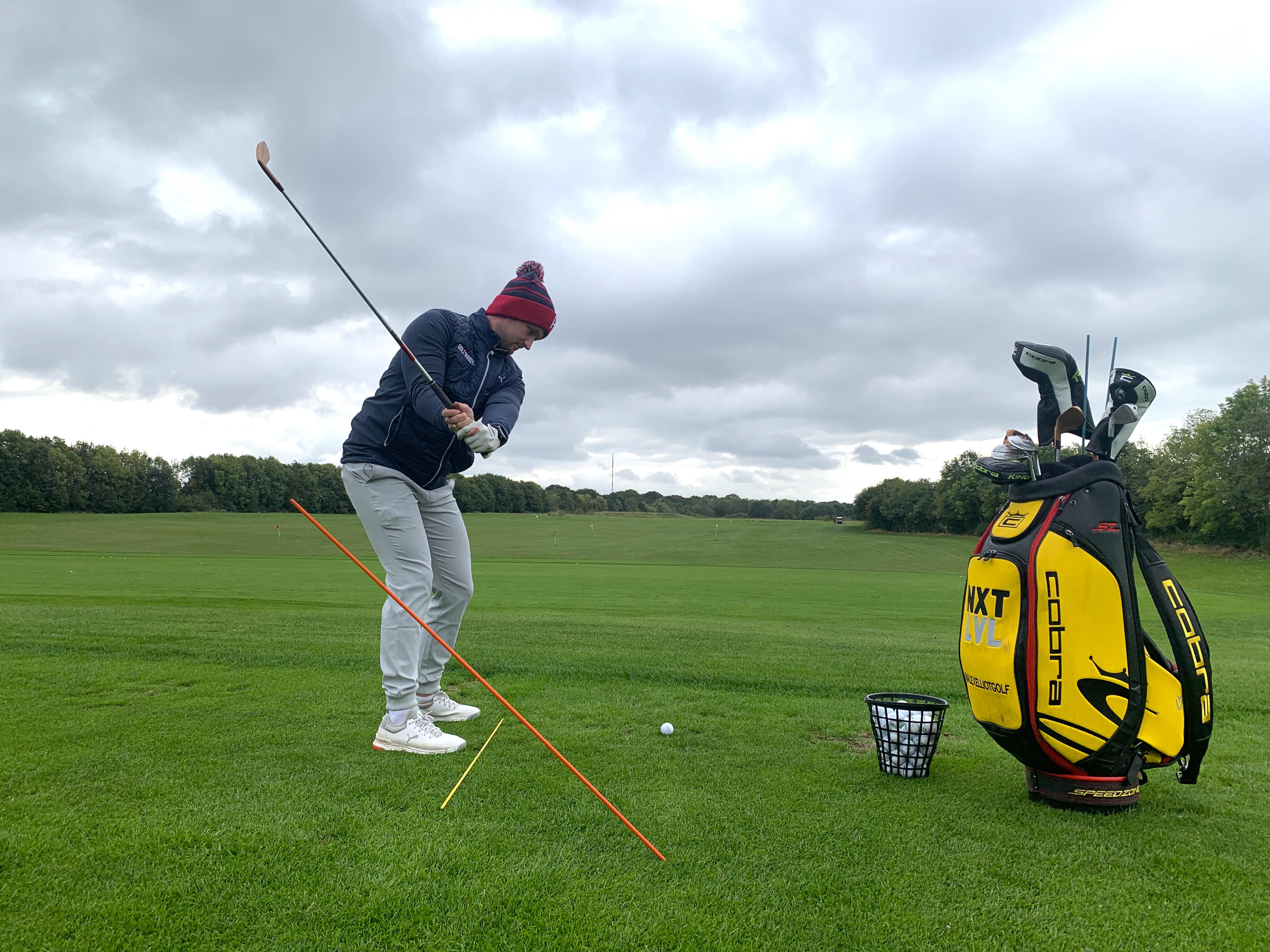
This drill is perfect for golfers who struggle with an over the top golf swing. As demonstrated in the video above, place an alignment stick in the ground behind you at a 45˚ angle.
If you are practicing at the driving range, and cannot place the alignment stick in the ground, place it through an empty basket instead. When taking the club back to the point where wrist hinge is introduced, the angle of the club should mirror that of the alignment stick.
As you swing down, ensure the club passes under the plane set by the alignment stick. This will help to create that elusive 'in-to-out' swing path that many amateurs struggle to master.
9. Putting Alignment

Putting is an area that many amateurs neglect in their practice, but improving the consistency of your stroke with the flat stick could make all the difference to your scoring. Using an alignment stick will help you find those marginal gains, especially with this brilliant putting drill.
Pick a putt on the practice green that is around 15ft with moderate break. Try a couple of practice putts to see the break clearly, then place an alignment stick on the ground pointing at your target line.
You can then use the stick as a reference point to align your clubface and body position, which are important factors to consider when addressing the golf ball. Hit a series of putts, paying particular attention these fundamentals, and you should notice that committing to your line delivers consistently good results.
8. Bunker Striking
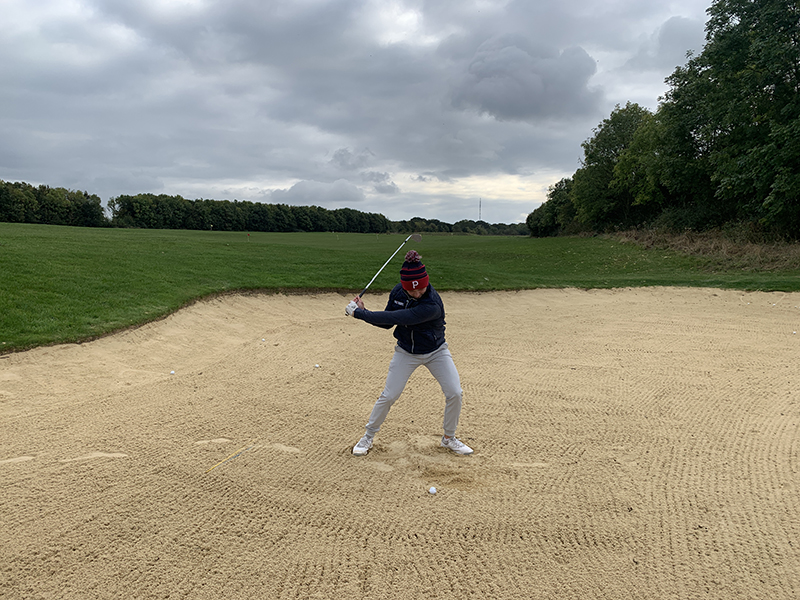
Hitting sand before the ball is something that strikes fear into many amateur golfers, and is therefore something that a lot of players struggle with. By using an alignment stick, it is possible to visually see the correct entry point for the club into the sand and as a result build that confidence to create reliable bunker shots every time.
Take your address position, and place two alignment sticks on the sand. The first should mark the position of the ball in relation to your feet, and the second should indicate where the club should enter the sand. Push the sticks into the sand, creating two lines, and remove them from the bunker.
Move away from the ball and take a few practice swings, aiming to strike the back line and then the front – in that order. This will encourage you to hit the sand before the ball, popping it out with a nice cushion of sand. This should create a soft landing on the green and help you to save par more often.
7. Long Game Alignment
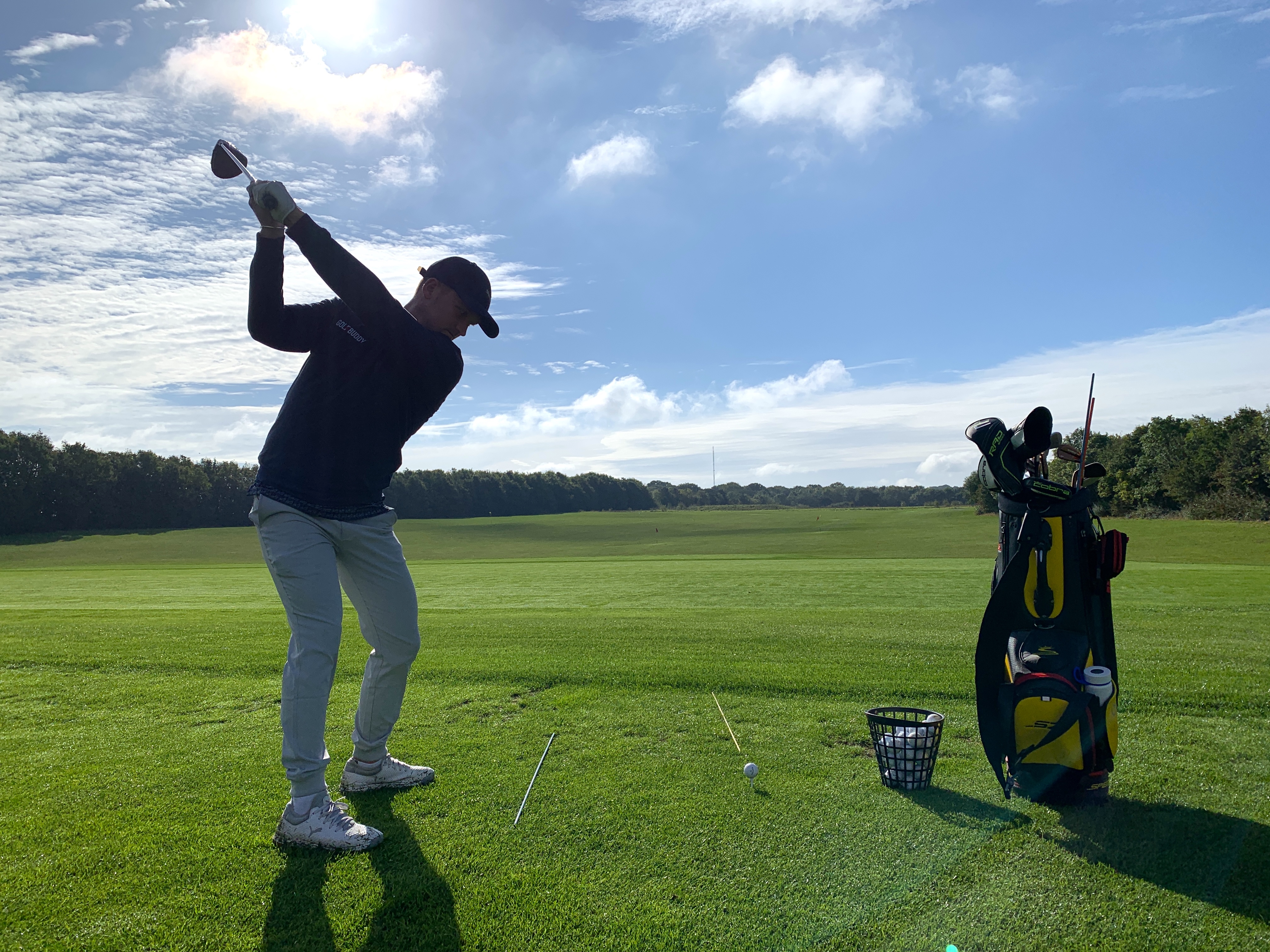
When it comes to how to use golf alignment sticks, this most obvious thing is it can help with how to aim in golf. Head to the range and place one stick on the line of your ball-to-target line - the alignment stick should be a couple of feet closer to the target than the ball.
Once this is in, place another stick down parallel to the first one, to mark the position of your feet, hips and shoulders. Now take your address position with your clubface pointing directly at the first stick and your body parallel to your ball-to-target line. If you do it correctly, you should have perfect club and body alignment.
6. Golf Swing Checker
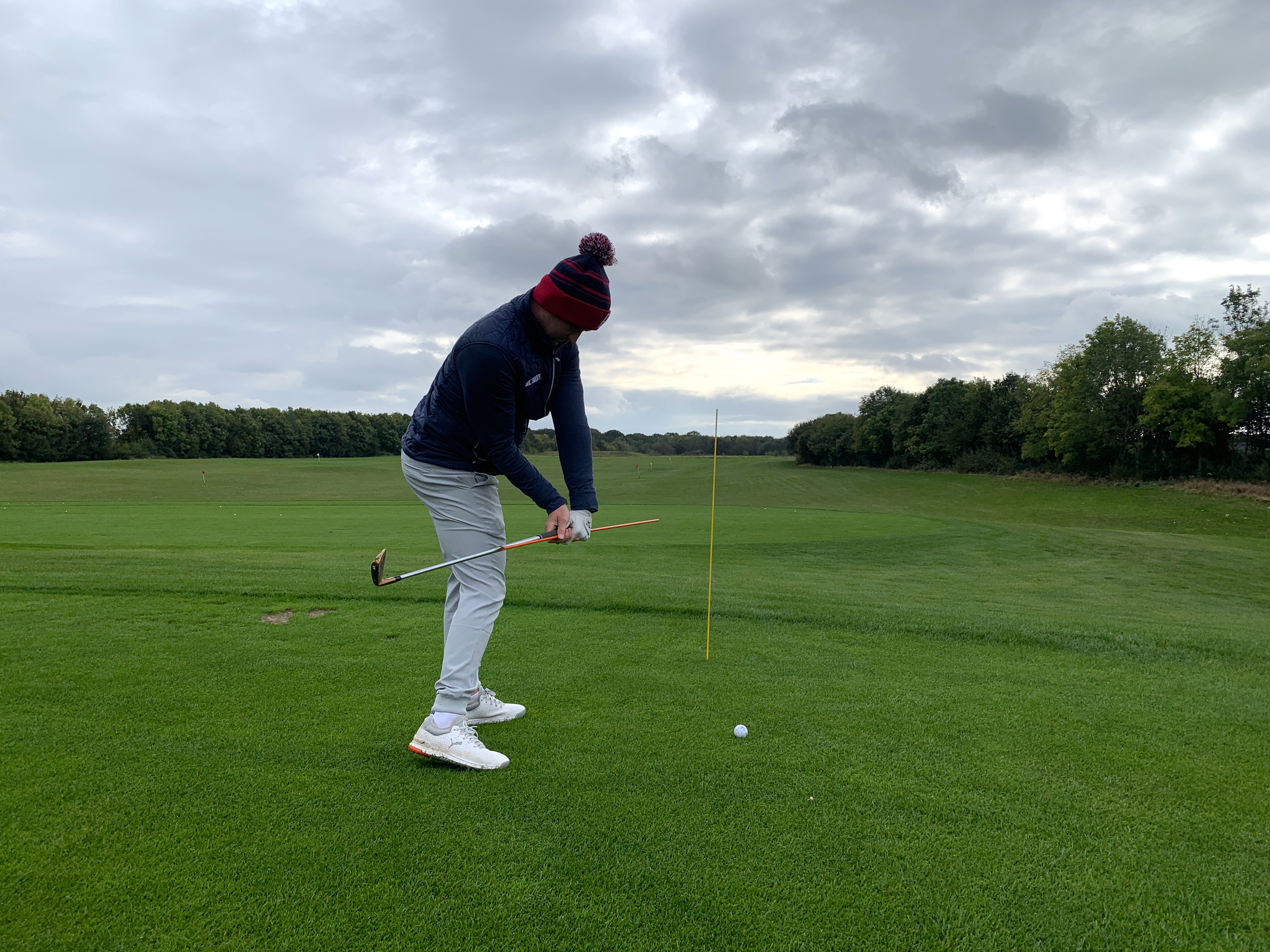
This is a great one to improve the path of your swing, either at the range or at home. As you take your grip, place an alignment stick in your hands so that in the address position, the stick is touching your lead hip. Take a look at the video with this article to see exactly how this is done.
Now make a slow, deliberate practice swing, stopping at certain key positions to see where the alignment stick is pointing. As you hinge your wrists in the backswing, the stick should point at the ground. Then, the key position to check is half way through the downswing.
The stick should be aiming slightly right of your target line. This highlights whether you are attacking the ball with a slightly in-to-out path. At impact the stick should be close to your left hand side and then in the finish, check that it doesn’t touch your body.
5. Chipping Technique
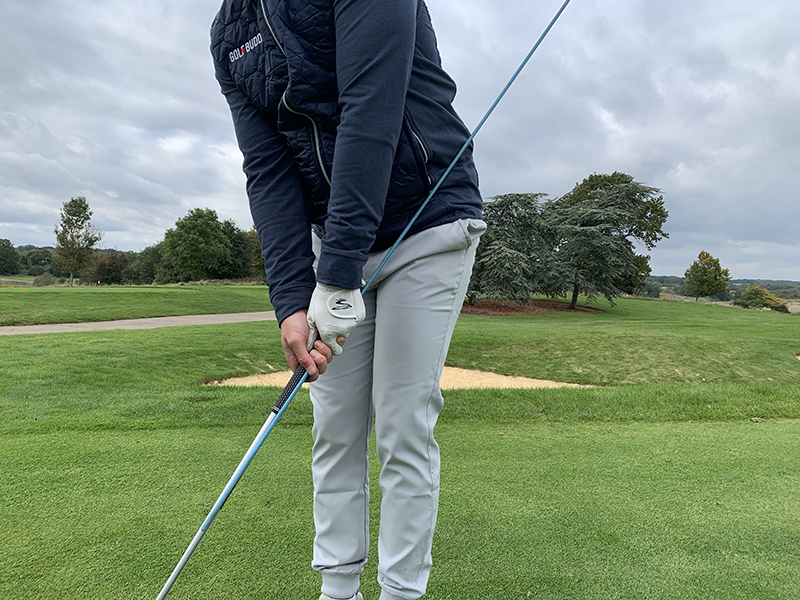
A common mistake amateur golfers make when chipping is flicking at the ball. By introducing too much wrist hinge through impact, they lose any control of distance or strike in their golf shots.
A simple way to remedy this is, as you grip the club in practice, also grip an alignment stick in your hands. The stick will run past your left hip, which will provide some instant feedback. As you make some swings, ensure the stick doesn't touch the left hand side of your body. The more you bed in this feeling on the practice facilities, the more your chipping will improve on the course.
4. Ball Striking
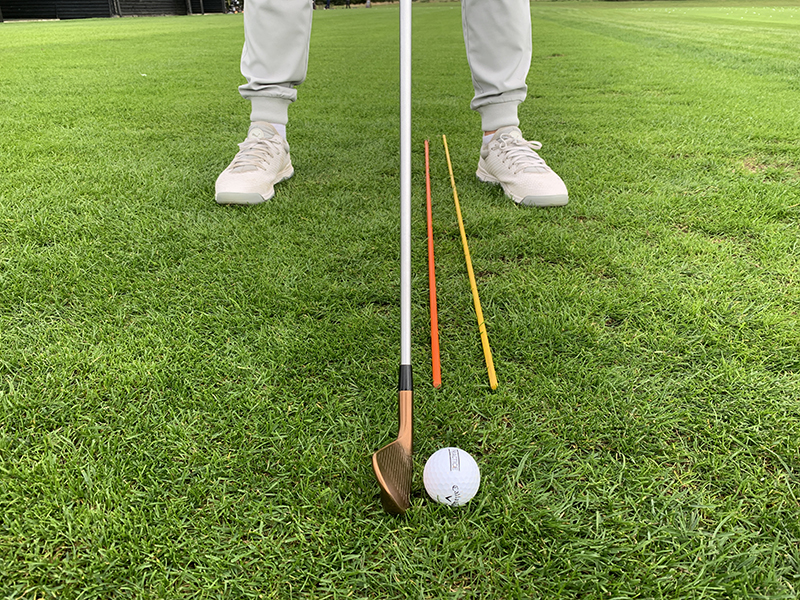
What is the right angle of attack in golf? It is an important question and with a mid or long iron in hand, if you get it right, the divot will begin just after you have struck the ball. You can practice this with alignment sticks.
Place two on the ground - one marking your ball position and the second, an inch closer to target, making where the low point of the club should be in your swing. Hit some shots (as I do in the video) and use the sticks to highlight whether you are striking the ball with a downward angle of attack.
3. Chipping Strikes

Here is a similar drill for chipping. Place the alignment stick on the ground facing your target, just outside your trail foot (again, the video shows how this looks). Hit some chip shots simply trying to avoid striking the stick. This creates that shallow but still downward strike that is so important when you chip.
2. Shot Shaping
If you have access to a grass range, this is a great way to practice your shot shaping. Place an alignment stick in the ground directly on your ball-to-target line, about four metres away from you. This is designed to recreate that feeling of when you have a tree on your line that you need to shape the ball around.
See if you can hit two shots that shape around the stick in different ways (one fade and one draw). Concentrate on starting the ball either to the right or left of the stick and then see if you can shape it back. This drill is about feel and helping you develop an understanding for how to manipulate the flight of your shots!
1. Putting Pace
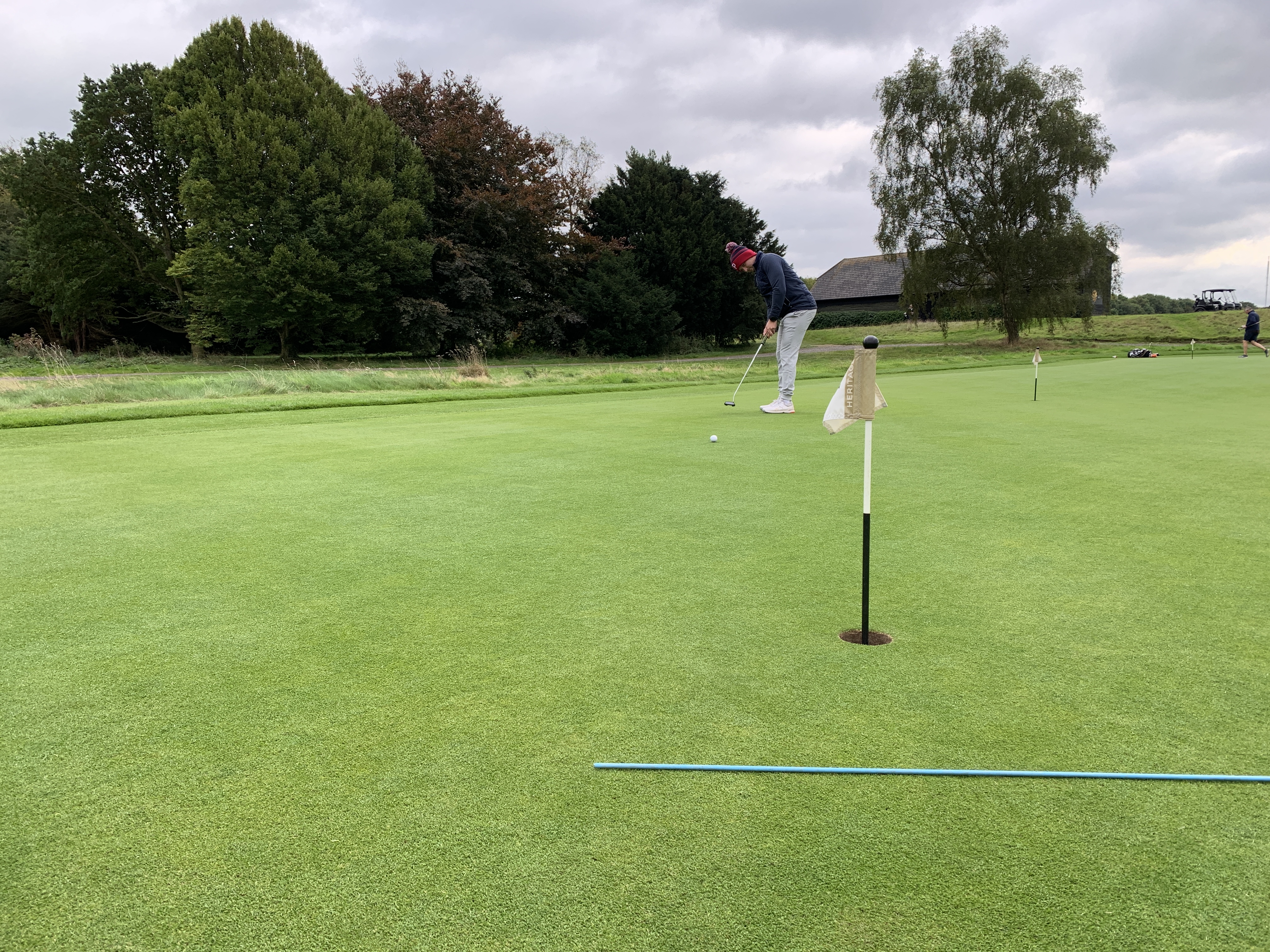
When it comes to how to use golf alignment sticks, this is a brilliant drill for tuning yourself into the pace of the greens. Place an alignment stick on the ground, just wider than the length of your putter grip, away from the hole.
With one golf ball only, try to hit the putt so it has enough pace to reach the hole without it going on to touch the stick. Repeat this practice putting drill for uphill, downhill and across the hill putts to get a great feel for pace, particularly before you play.
Are Alignment Sticks Worth It?
At somewhere between $20-25, alignment sticks are a relatively modest investment given the potential benefit to your game. What's more, there are a range of options - all of which are light (meaning they can be kept in your bag full time without adding too much bulk) and some of which fold up into a compact package.
However, whether or not they are worth it depends on how much you practice. If you are focused on improving your golf game, there are loads of applications (as this article shows). Used correctly, you should certainly see a benefit. And given how small they are and that you can stick them in the ground, they are more useful than just relying on the shafts of your clubs.







